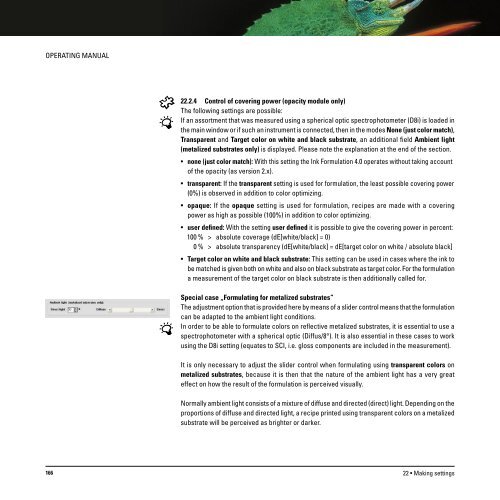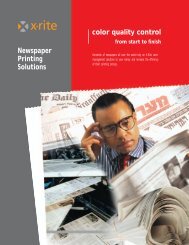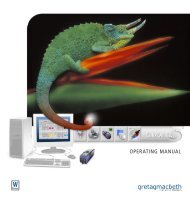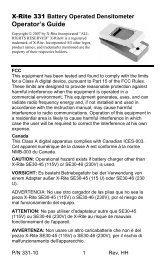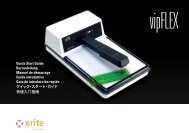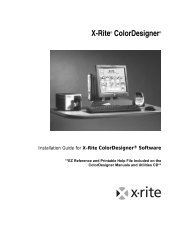Operating Manual
Operating Manual
Operating Manual
You also want an ePaper? Increase the reach of your titles
YUMPU automatically turns print PDFs into web optimized ePapers that Google loves.
OPERATING MANUAL<br />
22.2.4 Control of covering power (opacity module only)<br />
The following settings are possible:<br />
If an assortment that was measured using a spherical optic spectrophotometer (D8i) is loaded in<br />
the main window or if such an instrument is connected, then in the modes None (just color match),<br />
Transparent and Target color on white and black substrate, an additional field Ambient light<br />
(metalized substrates only) is displayed. Please note the explanation at the end of the section.<br />
• none (just color match): With this setting the Ink Formulation 4.0 operates without taking account<br />
of the opacity (as version 2.x).<br />
• transparent: If the transparent setting is used for formulation, the least possible covering power<br />
(0%) is observed in addition to color optimizing.<br />
• opaque: If the opaque setting is used for formulation, recipes are made with a covering<br />
power as high as possible (100%) in addition to color optimizing.<br />
• user defined: With the setting user defined it is possible to give the covering power in percent:<br />
100 % > absolute coverage (dE[white/black] = 0)<br />
0 % > absolute transparency (dE[white/black] = dE[target color on white / absolute black]<br />
• Target color on white and black substrate: This setting can be used in cases where the ink to<br />
be matched is given both on white and also on black substrate as target color. For the formulation<br />
a measurement of the target color on black substrate is then additionally called for.<br />
Special case „Formulating for metalized substrates“<br />
The adjustment option that is provided here by means of a slider control means that the formulation<br />
can be adapted to the ambient light conditions.<br />
In order to be able to formulate colors on reflective metalized substrates, it is essential to use a<br />
spectrophotometer with a spherical optic (Diffus/8°). It is also essential in these cases to work<br />
using the D8i setting (equates to SCI, i.e. gloss components are included in the measurement).<br />
It is only necessary to adjust the slider control when formulating using transparent colors on<br />
metalized substrates, because it is then that the nature of the ambient light has a very great<br />
effect on how the result of the formulation is perceived visually.<br />
Normally ambient light consists of a mixture of diffuse and directed (direct) light. Depending on the<br />
proportions of diffuse and directed light, a recipe printed using transparent colors on a metalized<br />
substrate will be perceived as brighter or darker.<br />
166<br />
22 • Making settings


